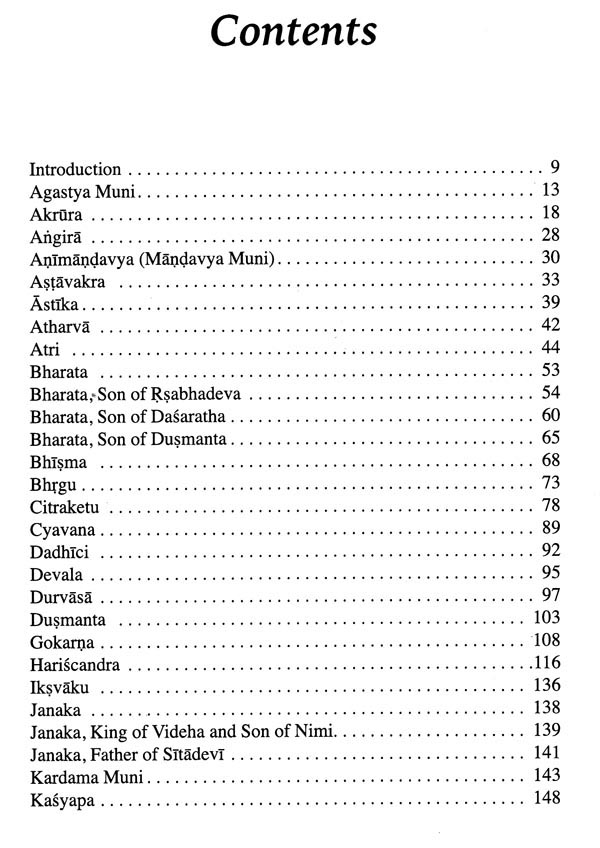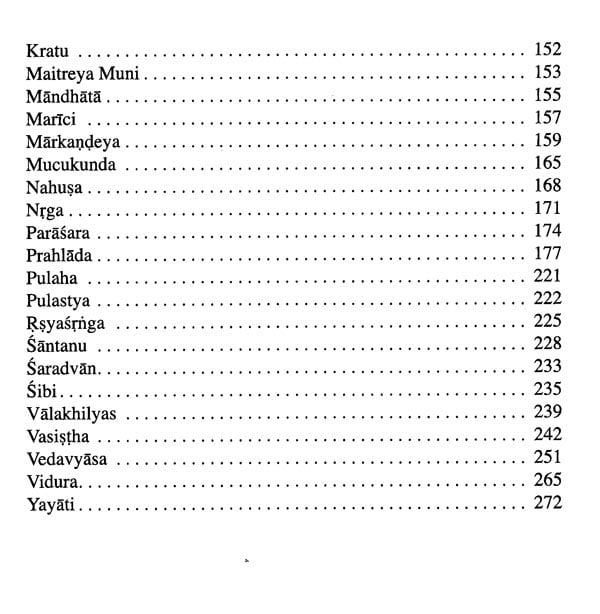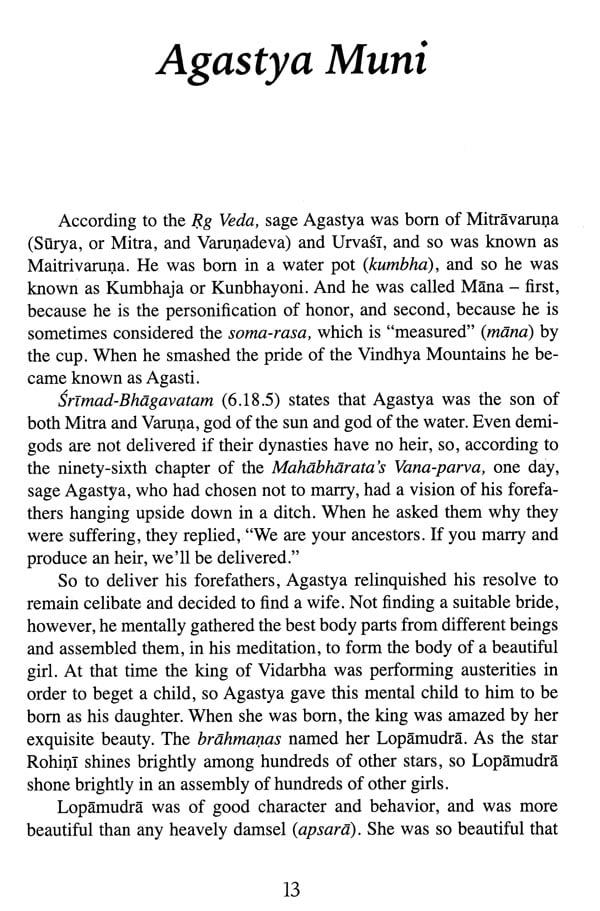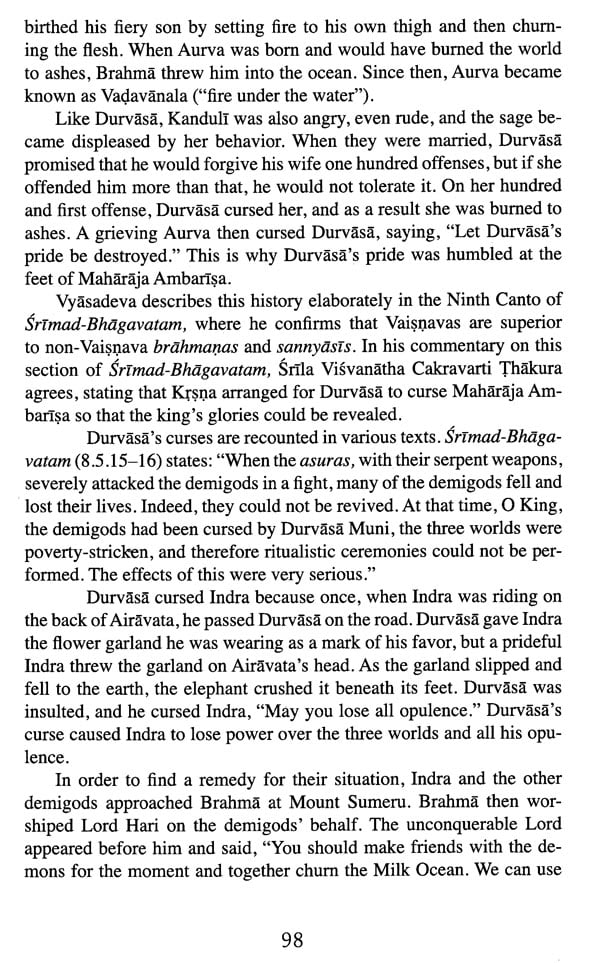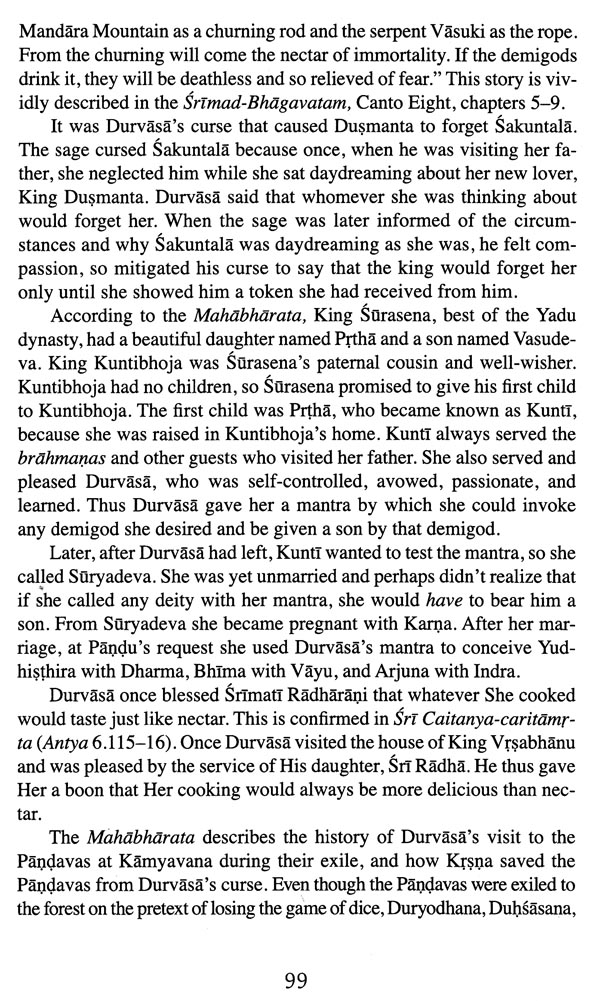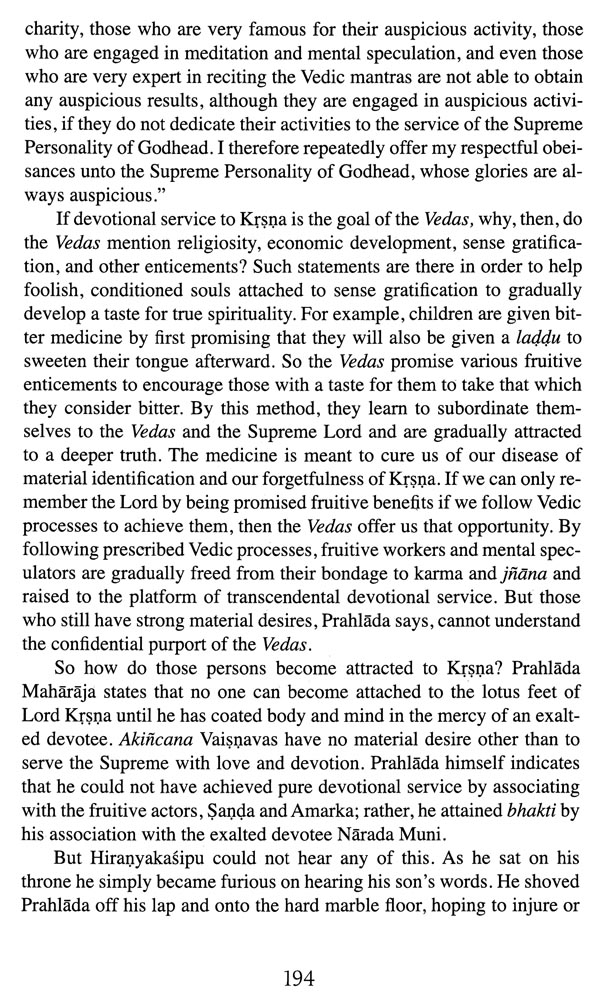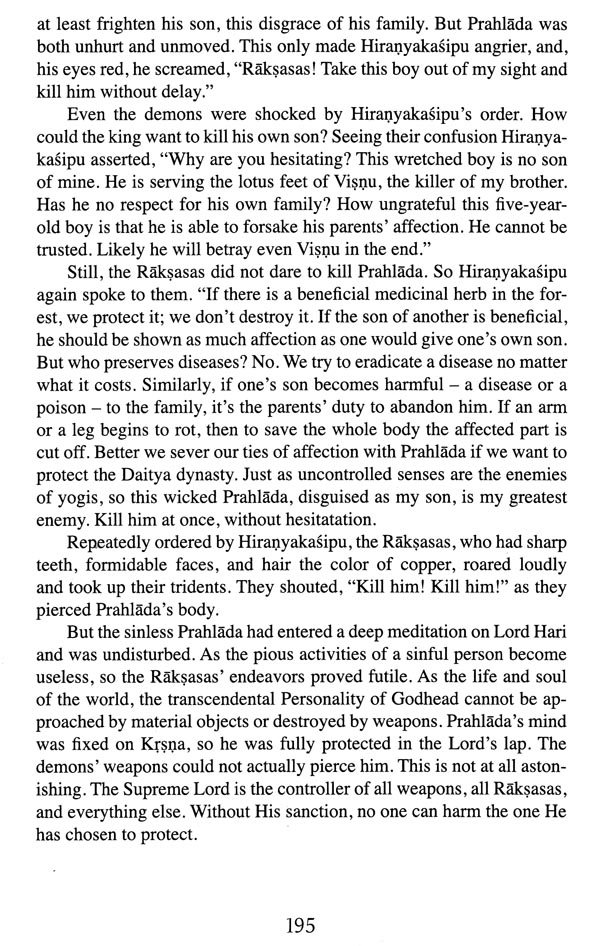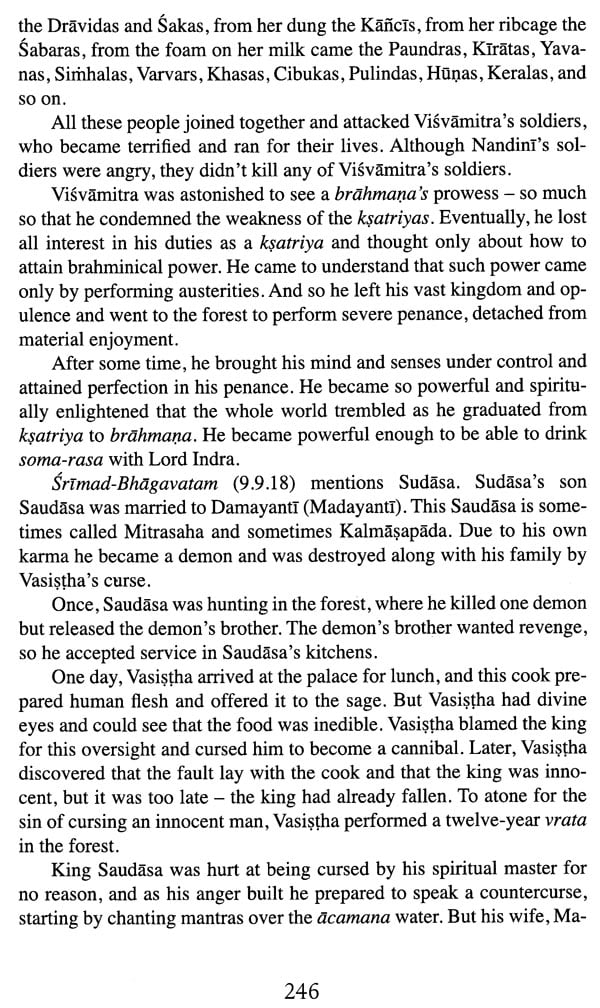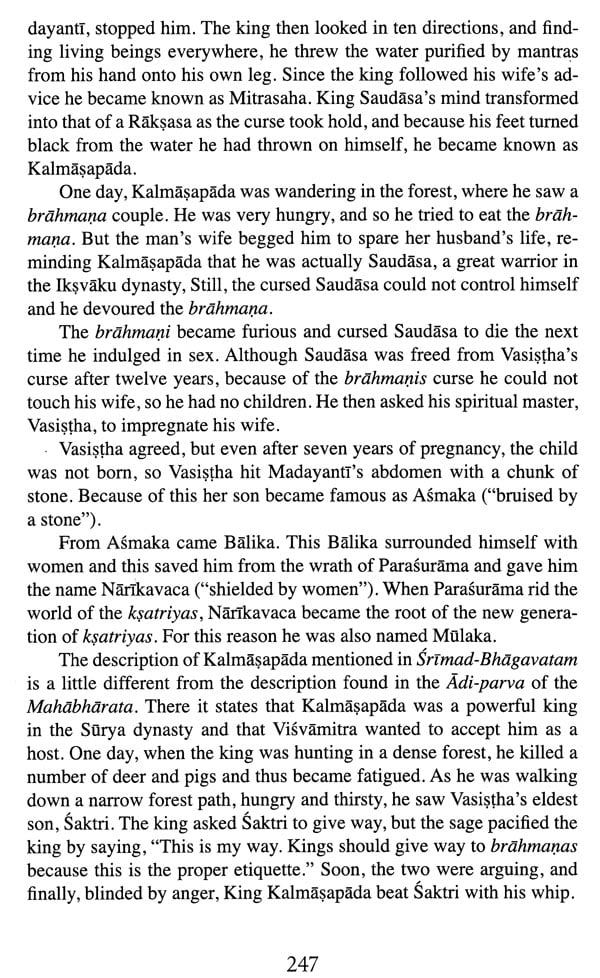
Pauranic Caritavali (Legends of The Puranas)
Book Specification
| Item Code: | NAR185 |
| Author: | Isvara Dasa and Bhumipati Dasa |
| Publisher: | Touchstone Media |
| Language: | English |
| Edition: | 2018 |
| ISBN: | 9788193481486 |
| Pages: | 278 |
| Cover: | HARDCOVER |
| Other Details | 9.50 X 6.50 inch |
| Weight | 460 gm |
Book Description
The Puranas were composed by different types of people, whose purpose it was to elevate consciousness. While some sections of the Vedic literature offer philosophical inquiry into the absolute reality, and other sections provide information about how to perform Vedic sacrifices in order to achieve the absolute realm, the Puranas narrate the history of persons living a Vedic life, combining the import of the philosophical teachings with practical histories in a way as to give access to the Vedic teachings to all sections of humanity.
The Puranas largely contain narrations of saintly sages and kings.
By hearing accounts of the lives of these persons, faithful readers can deepen their awareness of the Absolute and learn from the experiences of others who have tried to approach Him. Thus we have stories like those of Visvadmitra, a once powerful king, who saw the spiritual power of a brahmana and coveted it. By following his story, we get much advice on what it means to live a pious, God-centered life. As the goal of the Vedic literature is to entice us to serve God, so the Puranas, being part of the Vedic literature, share that goal.
The Puranas contain accounts of the oldest histories known to hu-mankind - accounts that stem from the creation itself. The Puranas are not like Western historical records. In the West we tend to record history as if it were a linear event - it started at some point in the past and moved inevitably forward into the future - and we tell it as if it were the whole story, even though there are innumerable ways to look at and interpret these events. In Sanskrit such histories are called apauruseya, histories of a series of events in a human society meant to help people remember them. They are, in that sense, mundane records.
The Puranic record, by contrast, is called apauruseya, "derived from something beyond human experience." For this reason, although these histories too tell of events, we cannot always draw a direct line from past to present. The Puranas are records not only of events but of ancient teachings, sometimes from worlds beyond our own. They often follow the karmic cause and effect of actions, and so easily move from past to present to past again, and they are presented not so much for record-keeping but to move people from material bondage to spiritual liberation.
Still, what does one do with accounts of flying mountains or sages drinking oceans? In the West, we categorize such histories as mythology - that is, not to be taken literally but symbolically or archetypically.
We see things differently from the Vedic perspective. First, we recognize that we can't depend on the physical senses to understand truth, and so we don't write off improbable events as myth. The Vedas teach that human beings have four defects: (1) they have the tendency to commit mistakes; (2) they have the tendency to be illusioned; (3) they have imperfect senses; and (4) they have a tendency to cheat both others and themselves.
Inevitably, all mundane historical accounts are subject to these four defects; anything assessed only with information gathered through the mundane senses cannot rise to transcendence. Thus one cannot get any tangible spiritual benefit from reading such histories.
The Puranas were composed by different types of people, whose purpose it was to elevate consciousness. While some sections of the Vedic literature offer philosophical inquiry into the absolute reality, and other sections provide information about how to perform Vedic sacrifices in order to achieve the absolute realm, the Puranas narrate the history of persons living a Vedic life, combining the import of the philosophical teachings with practical histories in a way as to give access to the Vedic teachings to all sections of humanity. The Puranas largely contain narrations of saintly sages and kings. By hearing accounts of the lives of these persons, faithful readers can deepen their awareness of the Absolute and learn from the experiences of others who have tried to approach Him. Thus we have stories like those of Vigvarnitra, a once powerful king, who saw the spiritual power of a brahmava and coveted it. By following his story, we get much ad-vice on what it means to live a pious, God-centered life. As the goal of the Vedic literature is to entice us to serve God, so the Puranas, being part of the Vedic literature, share that goal.
There are quite a few Puranas, compiled over the millennia by various sages. Some date back millions of years, while others were com-posed more recently. They are living works - additional materials are often added to them by later authors in order to emphasize particular points.
The sages teach that the Puranas are divided into three broad categories according to the three broad categories of human proclivity, Therefore we have Puranas that are suitable for those primarily in the mode of goodness, others that are suitable for those in the mode of passion, and still others suitable for those in the mode of ignorance.
We are most interested in the Puranas in the mode of goodness, because these histories describe the characteristics of the Supreme Lord and His incarnations and how to attain the spiritual world - all told through the accounts of those who have trod the spiritual path. The Puranas in the mode of passion describe various demigods and how to appease them in order to gain control over a bigger chunk of matter. The tamasic Puranas focus on Lord Siva and the material energy. Irrespective of what each of these Puranic categories describe, all have the ultimate goal of the reader discovering spiritual reality. The Puranas in the lower modes are there like sugarcoated medicine; they provide those intoxicated by matter the opportunity to take some truth without finding it quite so bitter.
In this book we have included only a selection of the sages and kings that populate the Puranas, describing only briefly their life and activities, why they are important, and how through reading about them spiritual practitioners can deepen their awareness of both pitfalls to avoid and successes to be had. It is our sincere wish that readers find these narrations wise and helpful in their spiritual lives, and ultimately that they enhance the general spiritual culture of our world.
